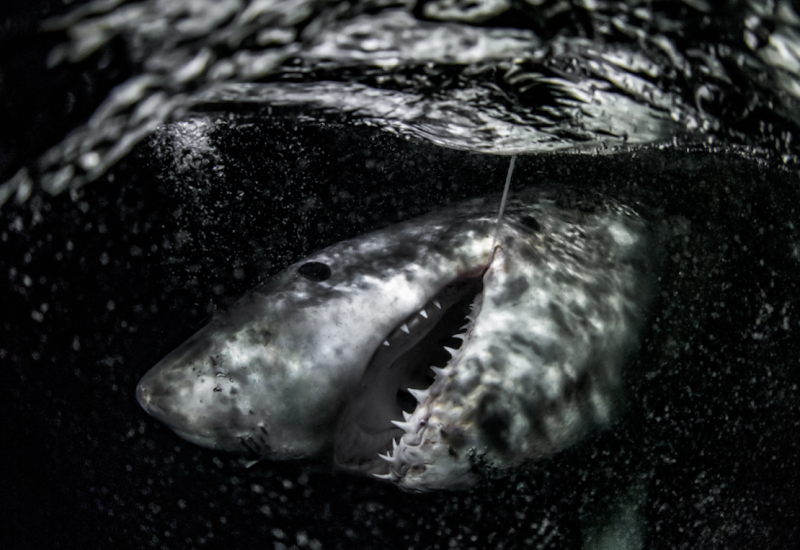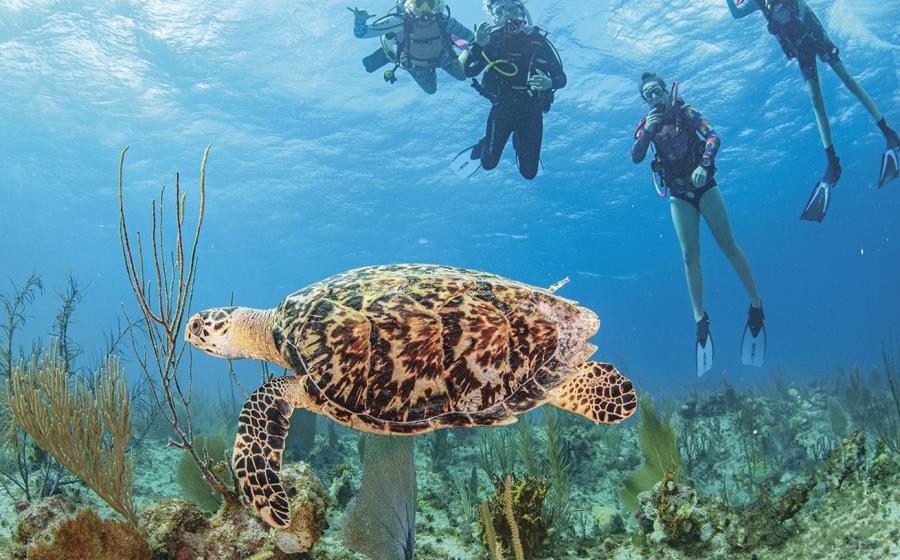Bearded Goby Fun Facts and Photos
Bearded gobies are about the cutest little gobies that one could hope to find. Shooting photos of them can become a bit painstaking though, as these flighty, timid subjects will do everything but pose for your lens. These newish critters to the macro community have also been called “hairy gobies,” and in some circles, “bearded papas,” but whatever name you choose, cute is definitely what these guys are all about.
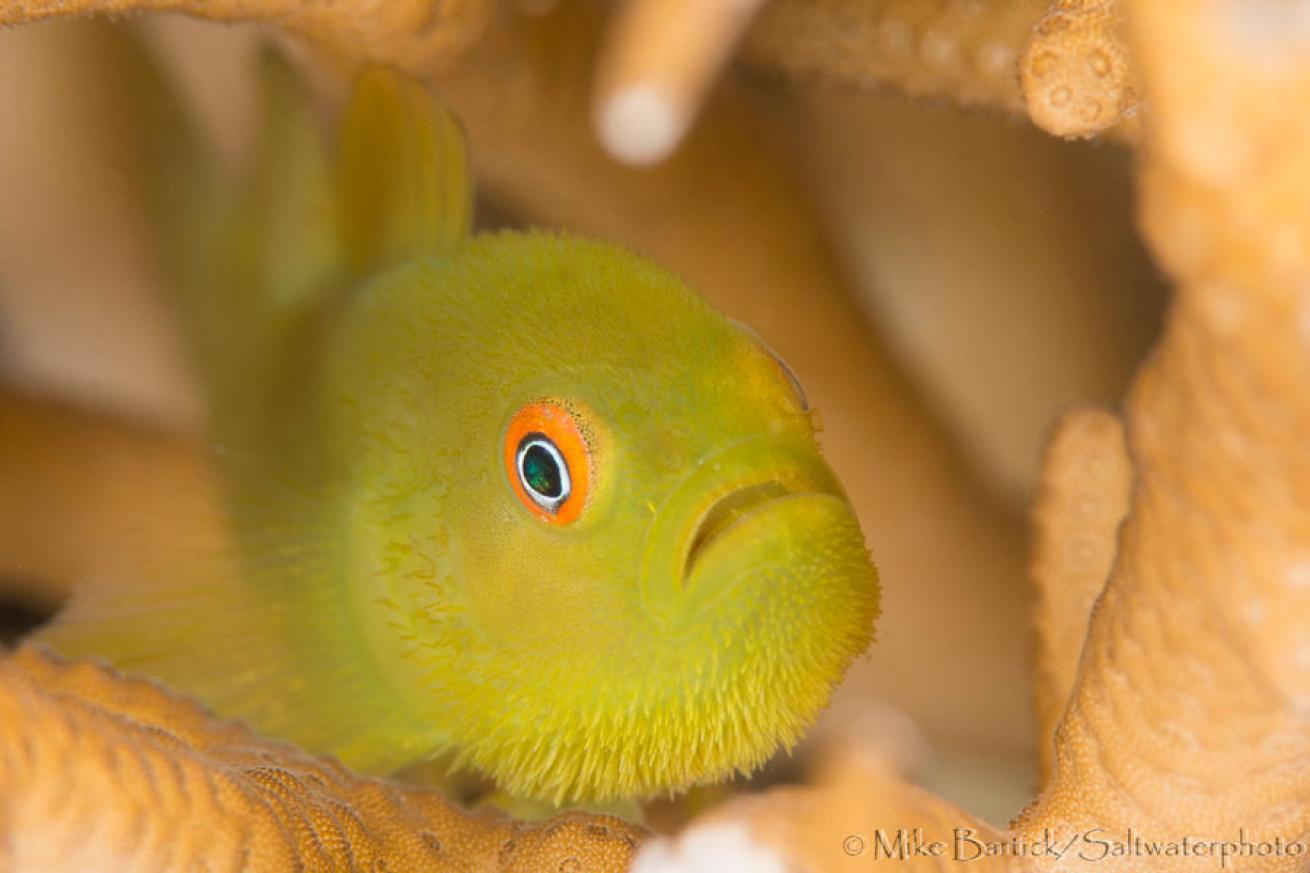
Mike Bartick(Paragobiodon xanthosoma)
Colors range from bright yellow to emerald green and they prefer the Seriatopora hystrix corals. If you take the time to closely examine the various coral heads in the Acropora family, you will begin to see the differences very quickly. Shallow, sunny lagoons are a great place to begin looking; shallow depths also provide the extra bottom time you’ll need to get a quality image.
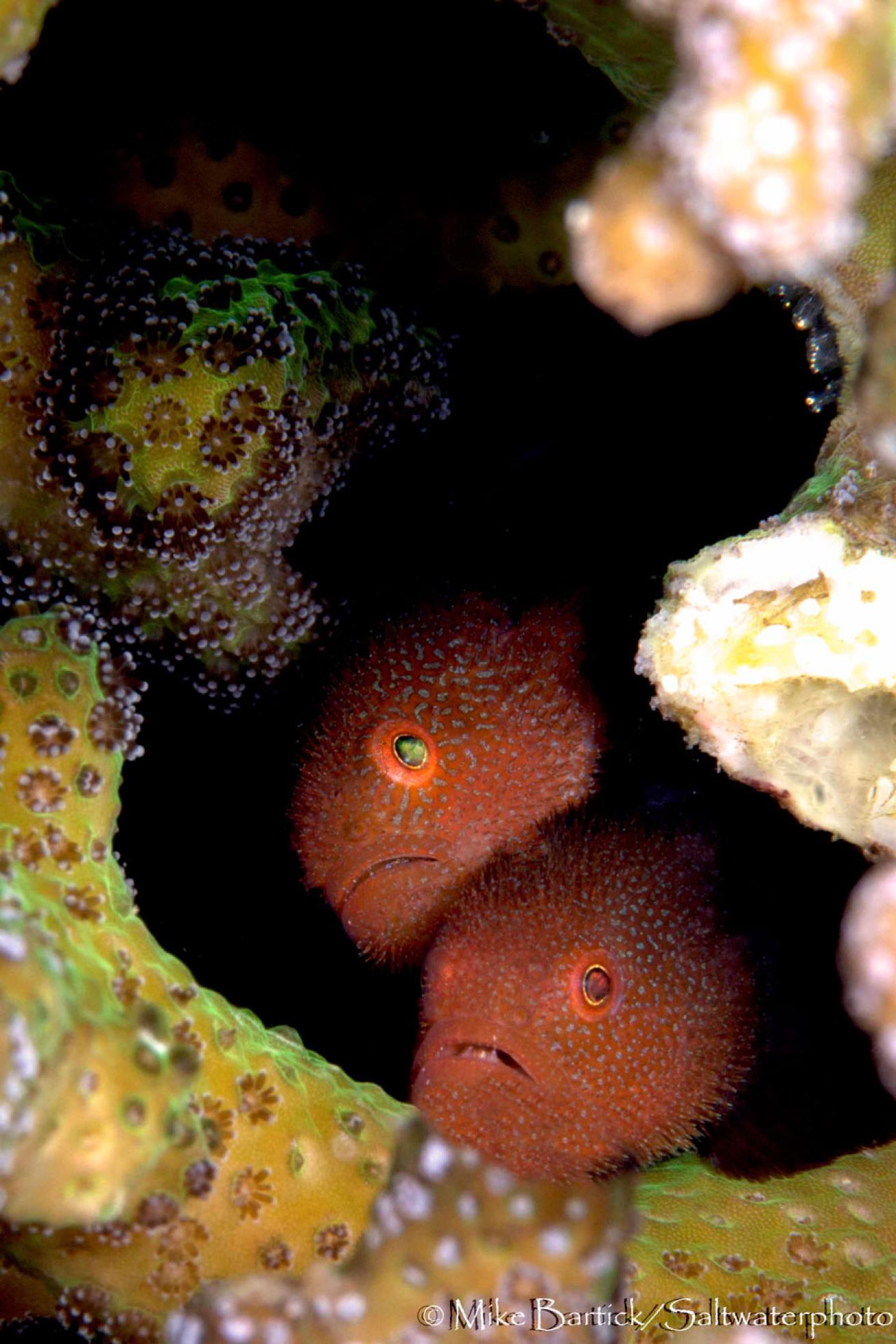
Mike Bartick(Paragobiodon modestus)
These goby live in the Pocillopora corals, which are a less common — but still found — in the shallows. The greenish tinge of the cauliflower coral helps to make the colors on these guys really pop. I recommend an f-stop and ISO combination that allows you to get the desired depth of field and subject detail while enabling a faster recycle time.
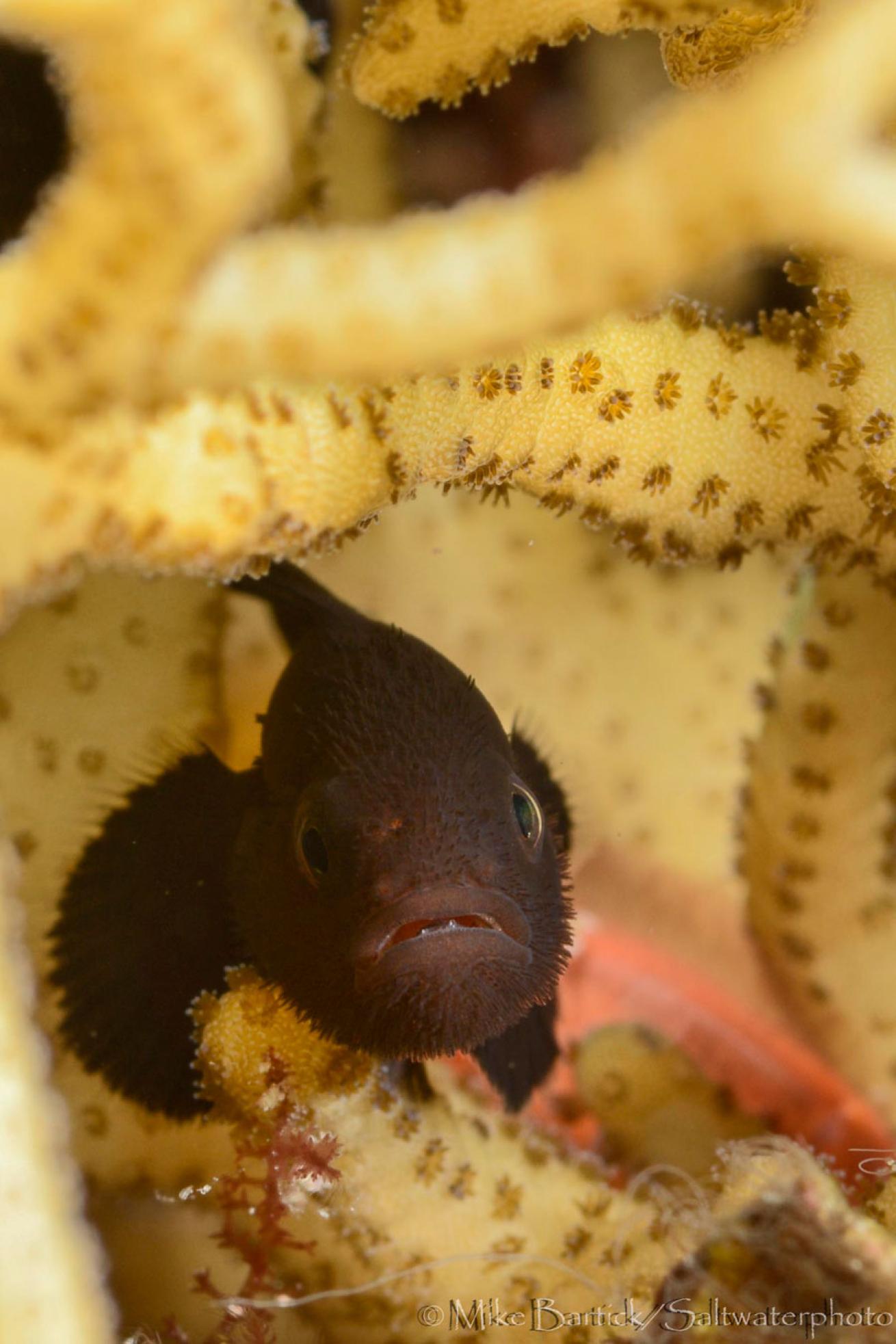
Mike Bartick(Paragobiodon melanosomus)
These have been observed in colonies of Acropora corals and Seriatopora spp. corals. Photographing a black, fast moving subject can sometimes dissuade photographers from attempting to shoot these guys. I recommend dialing back the f-stop to 11 and using a modeling light. Study the pattern of the fish and focus on the corals in the approximate area of the fish. This will keep your lens from hunting at just the wrong moment.

Mike Bartick(Paragobiodon echinocephalus/melanosoma)
After observing this extra fast-moving subject, I realized that its quick movements weren’t just the ordinary movements of these nervous coral gobies. Attached to the innermost section of the coral was a small patch of eggs that the goby anxiously and continuously aerated. This very special goby occurs in the coral known as Acropora nasuta. The red head goby is actually recruited by the coral to keep it free from turtle weed. Within minutes of the turtle weed/coral contact, the coral releases a chemical odor to alert the goby, which quickly comes to the rescue. The redhead goby does not consume the turtle weed; it only removes it.
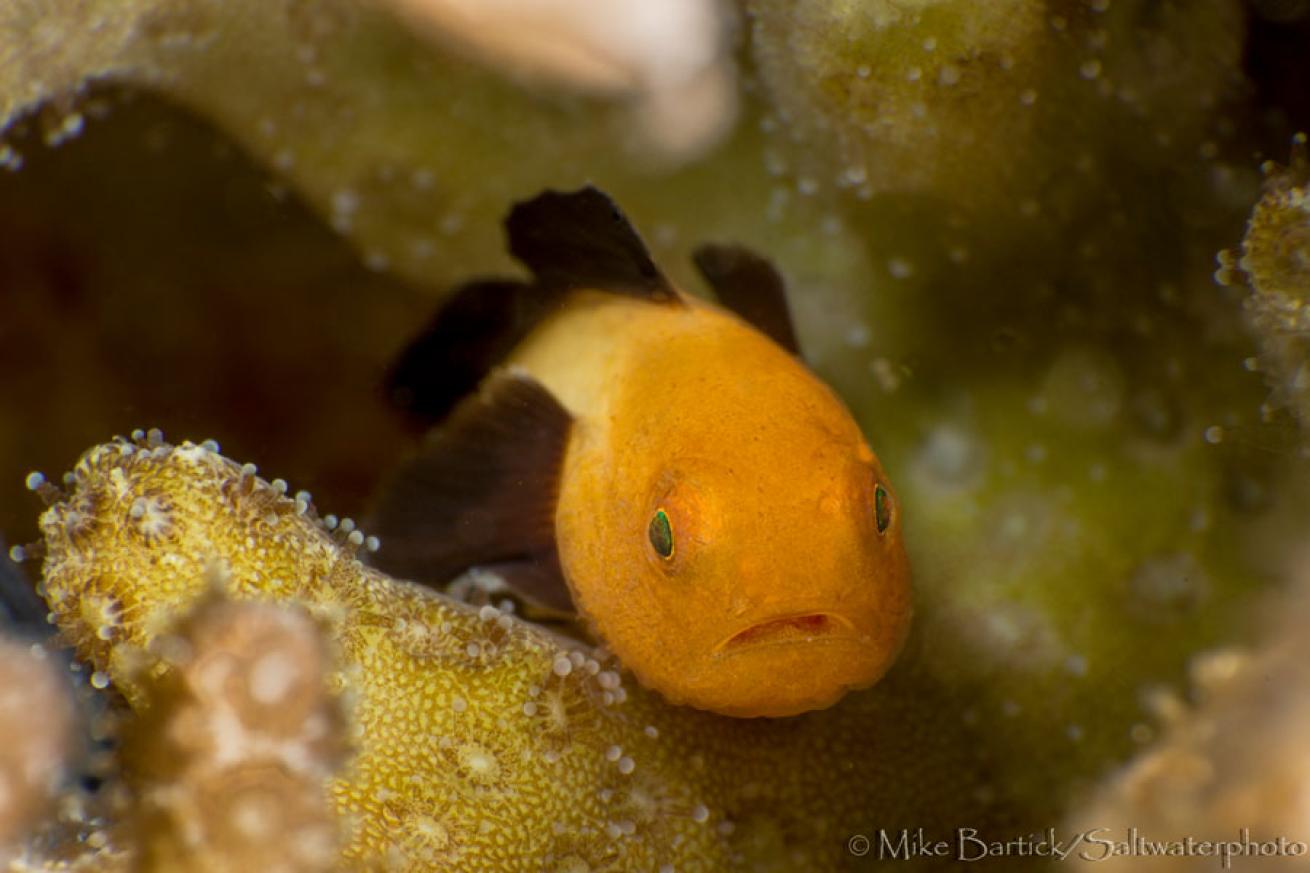
Mike Bartick(Paragobiodon lacunicolus)
After searching for what seemed like an eternity we focused our efforts on a couple of new locations for finding the panda gobies. With the help of my trusted guide, we located and examined the only Pocillopora damicornis corals that we could find. To my jubilant surprise, I was amazed to see a paired set flash through the coral very briefly, but long enough for a visual confirmation.
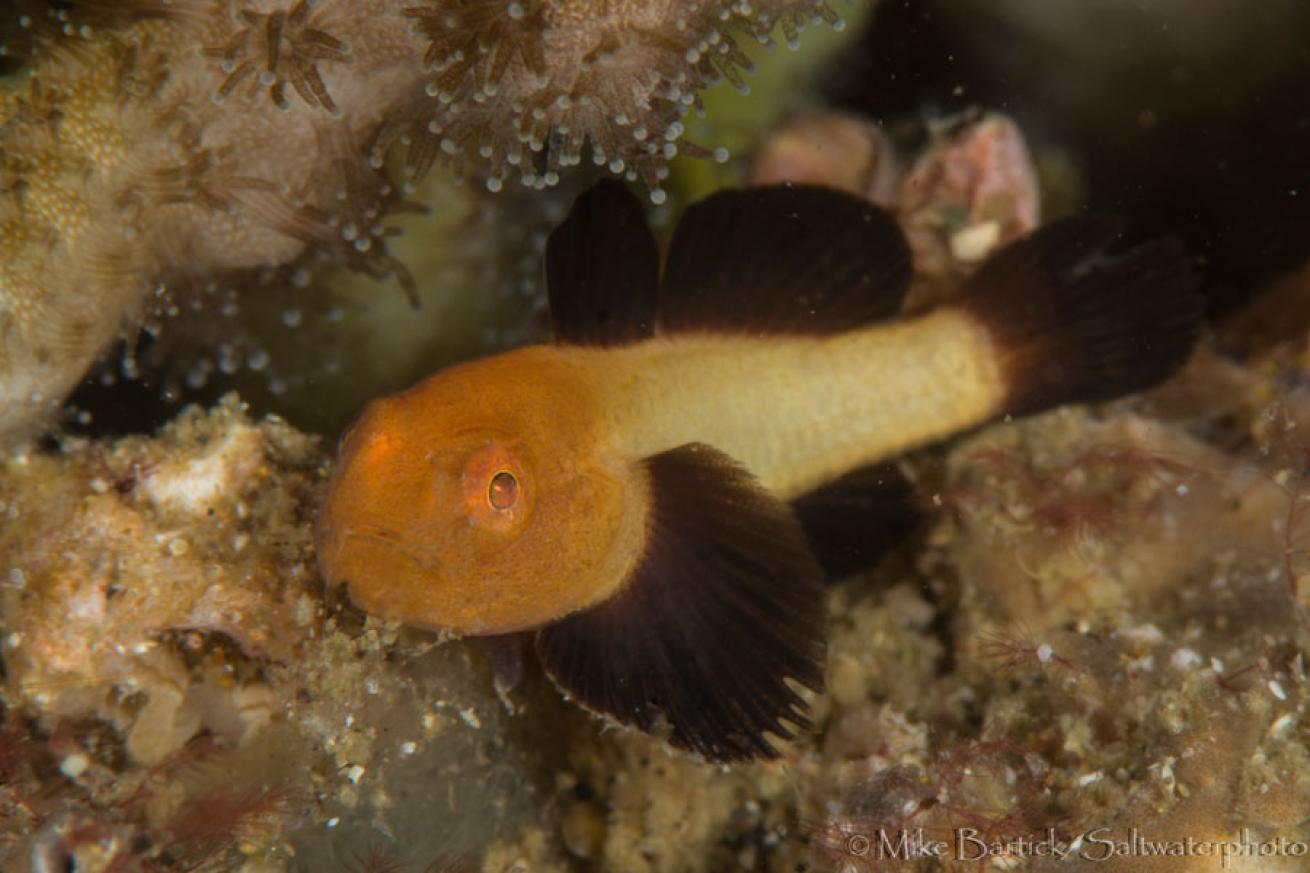
Mike Bartick(Paragobiodon lacunicolus)
A better-detailed shot for identification purposes can sometimes present more of a challenge. On close examination, you’ll notice this goby lacks the telltale beard, and although it’s described in the same family, the data is still a bit sketchy.
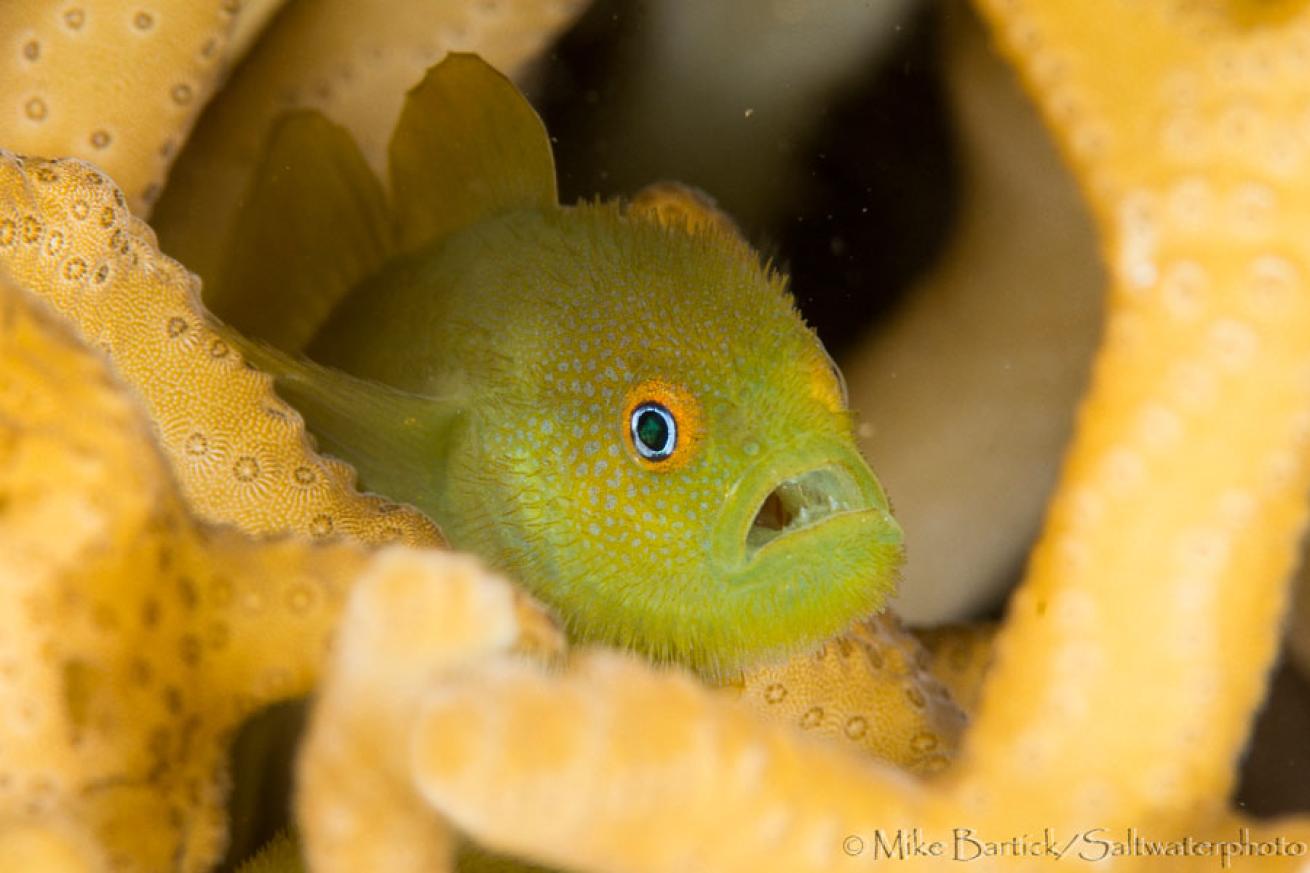
Mike Bartick(Paragobiodon xanthosoma)
In addition to having big heads, these guys also have big personalities, which adds to their cute factor. A close-up image of a larger specimen reveals some subtle details like freckles, a well-kempt beard and sharp, fang-like teeth, which are used to drag algae from the corals or snatch morsels of food drifting through its coral palace.
The bearded gobies are tropical marine gobies, described under the vast Gobiinae fish family, but are limited to just a few separately described species with each residing in their own specific hard coral. This group of gobies is found throughout Southeast Asia, the Indo-Pacific and a few other locations. Finding the right corals is the key to finding each of the different goby species in this group, so while brushing up on your coral ID isn’t essential, it’s nonetheless highly recommended. Shallow lagoons, which feature bright, sunny water and exposure to currents and surge, are excellent places to begin looking.
To avoid predation, the gobies hide at the base of the coral where they lay their eggs, making them even harder to observe and photograph. The fish pair up in monogamous sets and both parents tend to the eggs. When searching for them, move slowly and closely, examining each small cluster of coral. The gobies’ coloration, as you will soon find, varies with the different species. They can be green to yellow, black, bi-colored red and black, lined, or our latest discovery, a tan body with black fins. What makes them so cute is their abnormally large head, colorful eyes, upturned, pouty mouth, robust botoxed lips — and of course the beard, which are actually Papillae, or sensory hairs, as these gobies lack the sensory pores or scales found on other gobies.
And while they are cute, they’re also a protective sentinel for the coral, performing vital tasks for the organism. Symbiosis between Acropora hard coral and coral gobies is complex and more facets of the relationship are constantly being discovered. What is known is that each offers the other protection in a struggle for survival. A recent study conducted at Georgia Tech discovered that when the host Acropora is threatened or portions of a colony are threatened, the coral will actually signal the gobies by releasing a chemical alert. Most of these threats come by way of toxic algae called turtleweed, algae blooms or competitive algae, such as seaweeds, which will settle or get caught in the branching coral heads and begin to smother the coral. The gobies respond quickly to this alert and move into the affected areas, proceeding to consume the bits of toxic seaweed settling there. In some cases, the gobies consume the seaweed as a food source, but at other times they merely rip the seaweed off of the corals, thereby removing any competitor and allowing the threatened Acropora to survive, in-turn protecting their home.
As fish often do, the gobies will move in patterns, and a quick study is recommended before setting up to capture your images. Most of the time the gobies aren’t visible until you take a closer look at the coral heads and apply a big dose of patience. I prefer to use a 105mm lens with a diopter at either +5 or +10 strength. I also use a chopstick or a reef stick as a mono-pod, positioned on a rock or discarded shell for support, allowing me the closest, stable approach possible without damaging the corals. It’s important to prevent inadvertent damage to the corals, as our presence in this tiny world can leave enduring scars with just a simple misplaced fin kick or clumsy camera-housing placement.
Special thanks to Crystal Blue Resort, Anilao, Philippines




